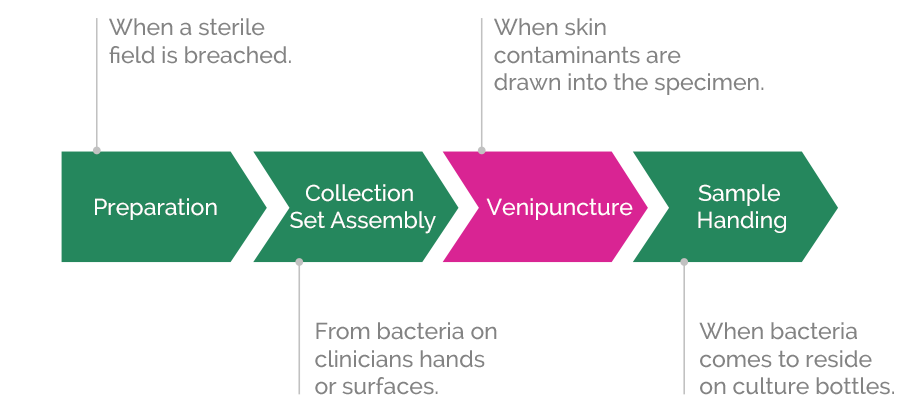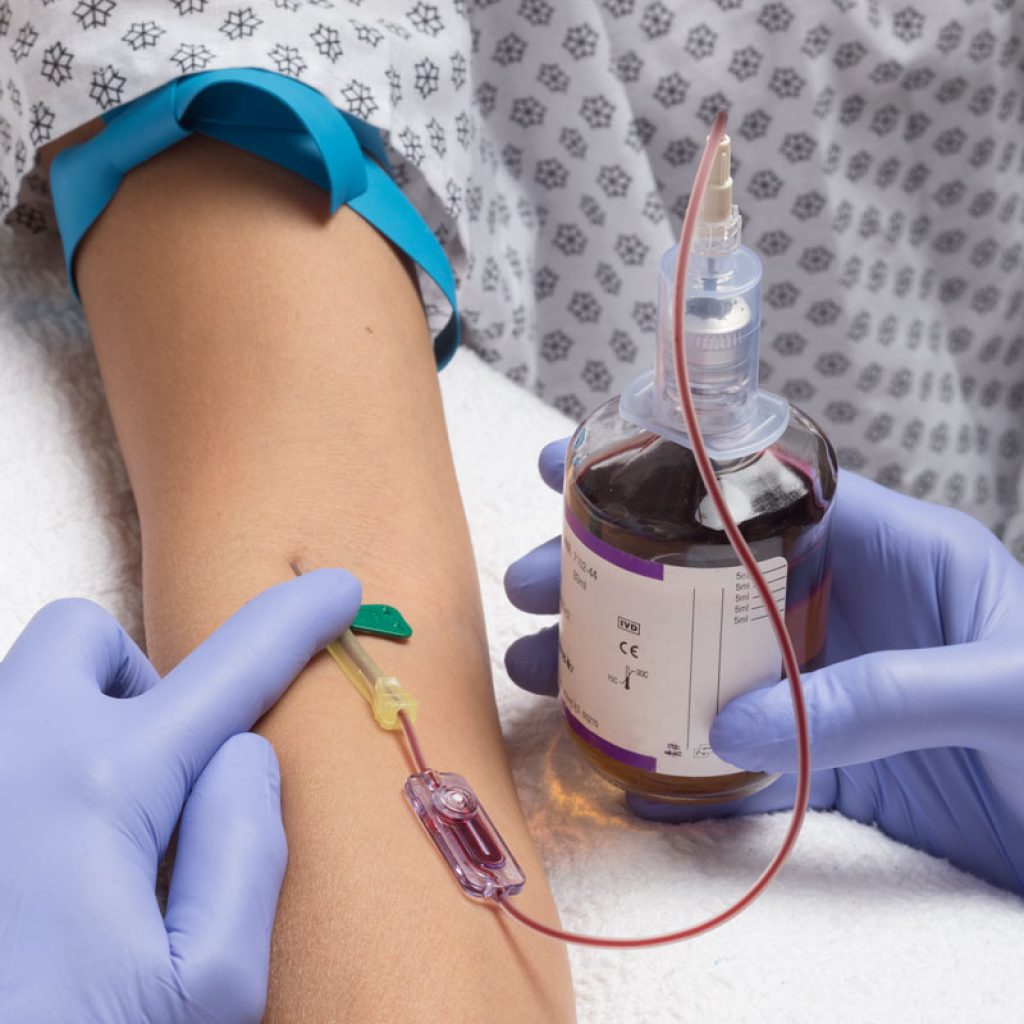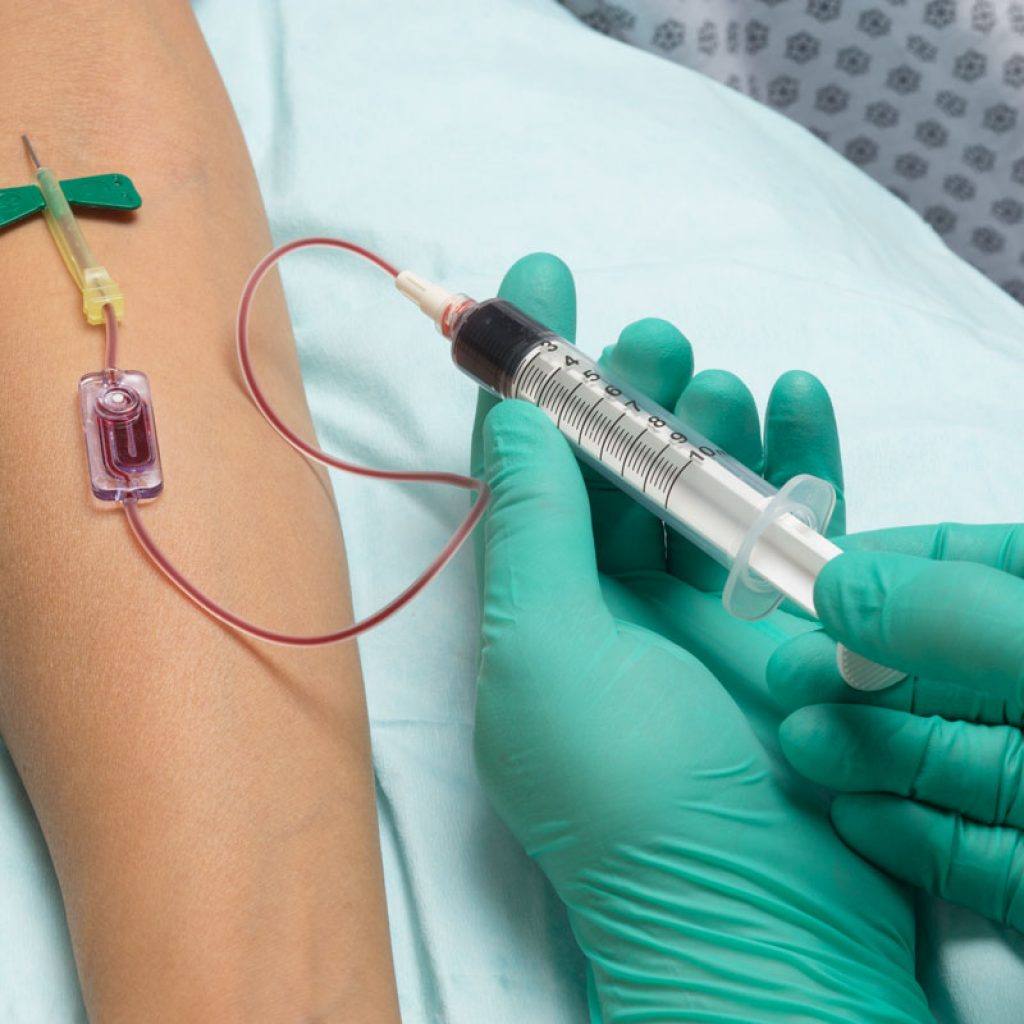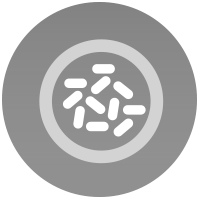Blood culture contamination sources
Skin contaminants are the most common blood culture contamination source. Roughly 20% of the microbes present in skin reside deep in the dermis layer and may be drawn into blood specimens.1 Without a means to eliminate the contaminants from the skin, hospitals accept high rates of seemingly unavoidable false positives blood cultures.
“It is currently accepted that most organisms identified as contaminants in BCs originate from the skin of the patient.”
– AJIC, 20151
Common blood culture contamination sources by phase
Blood culture contamination represents an ongoing source of frustration for clinicians, microbiologists, and hospital administrators, negatively impacting patient experience and unnecessarily adding to the cost of care. Yet, several points of potential contamination exist during routine blood culture collection:

There are several points of potential “touch contamination” whereby microbes from the environment, collection devices, or the clinician’s hands may introduce contaminants into the blood culture specimen. Contamination may occur during site preparation for venipuncture or catheter insertion, during collection set assembly, or when collection bottles are not properly disinfected.
However, the most common source of contaminants are the organisms, existing as skin flora, that appear in blood culture specimens. These contaminants are generally coagulase-negative staphylococci (CoNS), Corynebacterium species, Bacillus species other than anthracis, and P. acnes. Unfortunately, skin antisepsis alone cannot eliminate these contaminants as they may reside below the skin’s surface.







